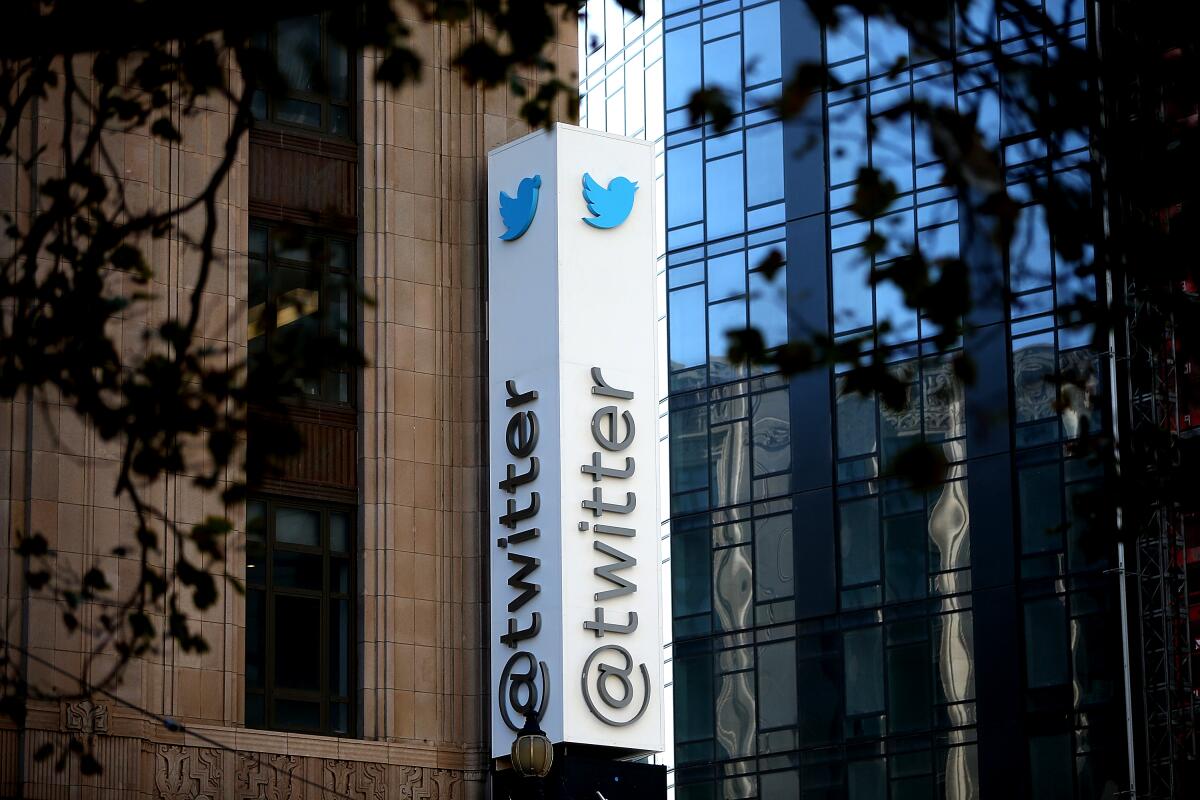Twitter faces SEC scrutiny over bot account math

The U.S. Securities and Exchange Commission recently pressed Twitter for more information on how the company identifies spam accounts, adding to scrutiny — stoked by Elon Musk — over the platform’s processes for keeping tabs on its user base.
The SEC’s June 15 query to Chief Executive Parag Agrawal, which was made public Wednesday, centered on statements in the company’s latest annual report. The company has said that spam and bot accounts account for less than 5% of its user base.
Twitter is on the defensive this week over how it tracks and keeps tabs on fake accounts after a whistleblower’s complaint alleged that the company didn’t do enough to deal with bot activity on its platform. Although the company has denied those allegations from its former head of security, Peiter Zatko, some legal experts say it could bolster Musk in his attempt to walk away from a $44-billion buyout of the platform.
“To the extent material, please disclose the methodology used in calculating these figures and the underlying judgments and assumptions used by management,” the SEC said in its June 15 letter to Agrawal, regarding statements in its annual report.
In response, Twitter’s lawyers told the SEC on June 22 that the company “already adequately discloses the methodology” that it uses. Twitter said that it randomly selects thousands of accounts to be reviewed by people each quarter and has done so for many years. Reviewers working for the company use both public and private data to flag an account as fake or spam.
Twitter’s ex-head of security said the company didn’t know how many bots were on the platform. That could benefit the Tesla chief’s attempt to wriggle out of a deal to buy Twitter.
The SEC also on Wednesday posted a July 27 letter noting that it had concluded its review of the matter. “We remind you that the company and its management are responsible for the accuracy and adequacy of their disclosures, notwithstanding any review, comments, action or absence of action by the staff,” the agency wrote.
Meanwhile, in its June 15 query, the SEC also asked Twitter to explain an error related to the company’s overstatement of daily average users between the first quarter of 2019 to the fourth quarter of 2021. The agency asked how the error, which was disclosed in the company’s first-quarter report, was discovered. It also asked why the social media giant determined it wasn’t a “material weakness” in internal controls over financial reporting.
In response, the company said the over-counting was related to letting users link separate accounts in order to easily switch between them. The overstatement “had no impact on Twitter’s financial statements,” the company said.







